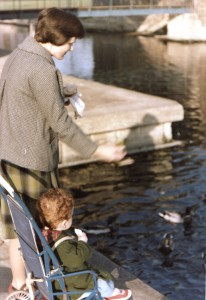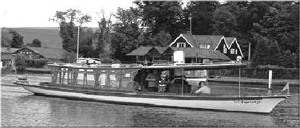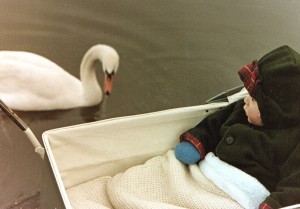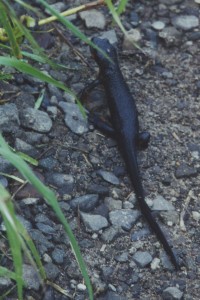Archive for the ‘creeks and rivers’ Category
Ducks and swans and boats, oh my!
My son’s first word was “duck.” This is not surprising. We lived in Windsor, England, downhill from Windsor Castle and a few blocks from the River Thames, a destination for our daily walk.
There was always something to see on the river. Sometimes rowing crews from Eton College, eight oarsmen in a long narrow shell sweeping the water with long strokes, the cox calling the rhythm. Lots of boats. My family’s special favorite was the elegant “Esperanza,” one of the many riverboats that took visitors on trips upriver.
David’s favorites were the ducks. There were hundreds of them on the river, dabbling among the water weeds, bobbing under with their tails in the air, or clustered enthusiastically close to the walkway if we remembered to bring stale bread to throw to them.
The swans were more scary. They were big, and their large beaks looked ready to take a nip if they were feeling feisty.
The swans of course are famous. Some of the mute swans on the Thames belong to the Queen, others to two ancient guilds, the Vintners and the Dyers. Each year, toward the end of July, there occurs a ceremony called Swan Upping, during which Thames swans with cygnets are rounded up by official Swan Uppers, caught, checked for health, marked with the appropriate leg rings, and then released under the direction of the Swan Marker.
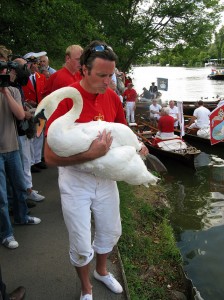
Swan Upper with swan. Photo by Bill Tyne, courtesy of Wikimedia Commons, https://commons.wikimedia.org/w/index.php?curid=29175336
Every day, something new to see.
Encounters with Newts
Now that our rains have finally started, the newts have come out of hiding. Last week I spent a couple of days at Green Gulch Farm, a Zen Buddhist retreat center and organic vegetable farm near San Francisco. California Newts were all over the paths. Their brown skin smooth, their underbellies a brilliant golden yellow, they were marching to the streams where they breed.
This morning we had to step around another California Newt on a path at the Mendocino Coast Botanical Gardens, a little one in its rough-skinned terrestrial phase. It was reluctant to move, since it was busy consuming a large earthworm; the last half-inch of the worm still hung from its mouth.
These encounters reminded me of visiting Montgomery Woods some years ago, when their close relatives the Red-bellied Newts were everywhere. I became fascinated with the story of their breeding migrations and wrote this poem, which was published in my 2007 chapbook, Quickening.
Red-Bellied Newt (Taricha rivularis)
What stirs, with the rain, that urge to return?
Some years she ignores the tingle in her nose,
the scent of that particular section of stream
where under a stone she hatched into a nymph,
then played for a year in the rippling water
before crawling transformed up the bank.
Summers she hides. Home is a secret hollow
under gnarled redwood roots in the ancient grove.
Some winters too. But once in a while, when the rains begin,
she emerges to make the journey to her breeding place.
Purposeful, she crawls, the red of her feet and belly
bright against the redwood duff,
navigating by smell to the rocky stream a mile away,
not home exactly, but the place she came from,
that pulls her back as it pulled her mother back.
Here she will mate, immersed in the water that gave her life,
deposit the fruits of her procreation under a stone,
then wander off to find good forage for the summer.
For thousands of years, as the giants grew overhead,
her kind have made this journey, secure in their faith
that the stream will still flow clear and fast over rocks.
They raise a question: what pulls us humans,
and to what deep places, and what is it we deposit,
like fertile newt eggs on the undersides of stones?
Edge of the Creek
High tide was at dawn. By noon, the breaking waves are far distant, and the creek on its way to the sea has cut a miniature cliff through damp sand. A reflection of sun on water ripples along the vertical face, fluted already by tiny sand-falls. As I watch, more sand avalanches skitter down to where, about half-way to the water, an undulating line with a little thickness to it, like a welted trim, defines where the vertical cliff gives way to a more gradual slope. The damp sand grains bounce off the ridged line and spread out down-slope, coming to rest at about forty degrees, their angle of repose. The scene is a microcosm of the world’s geological processes, the lifting up of land masses, the crumbling away. But what strikes me most is the beauty of it: the rippling light, the fluted cliff, the flurries of sand. I am mesmerized by pattern.
